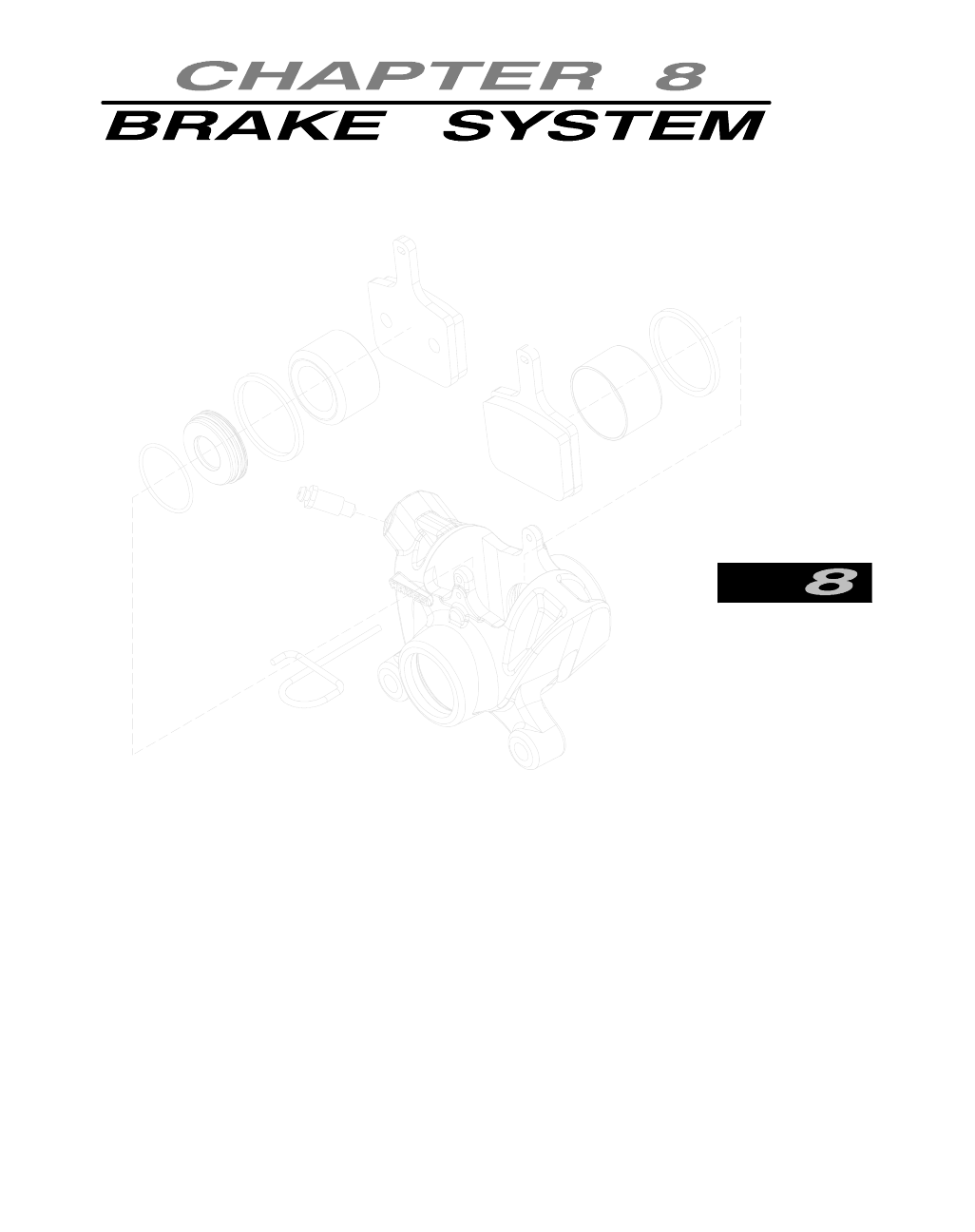Snowmobile Polaris DEEP SNOW (2005 year). Manual - part 41

Hydraulic Brake System Overview
8.1
. . . . . . . . . . . . . . . . . . . . . . . .
Brake Bleeding / Fluid Change
8.2
. . . . . . . . . . . . . . . . . . . . . . . . . . .
Hayes Master Cylinder
8.3
. . . . . . . . . . . . . . . . . . . . . . . . . . . . . . . . .
Master Cylinder
Removal
8.3 -- 8.4
. . . . . . . . . . . . . . . . . . . . . . . . . . . . . . . . .
Inspection
8.4
. . . . . . . . . . . . . . . . . . . . . . . . . . . . . . . .
Replacing Cartridge Subassembly
8.4 -- 8.5
. . . . . . . . . . . . .
Assembly
8.6 -- 8.10
. . . . . . . . . . . . . . . . . . . . . . . . . . . . . . . .
Brake Pad Replacement
8.11
. . . . . . . . . . . . . . . . . . . . . . . . . . . . . . . . .